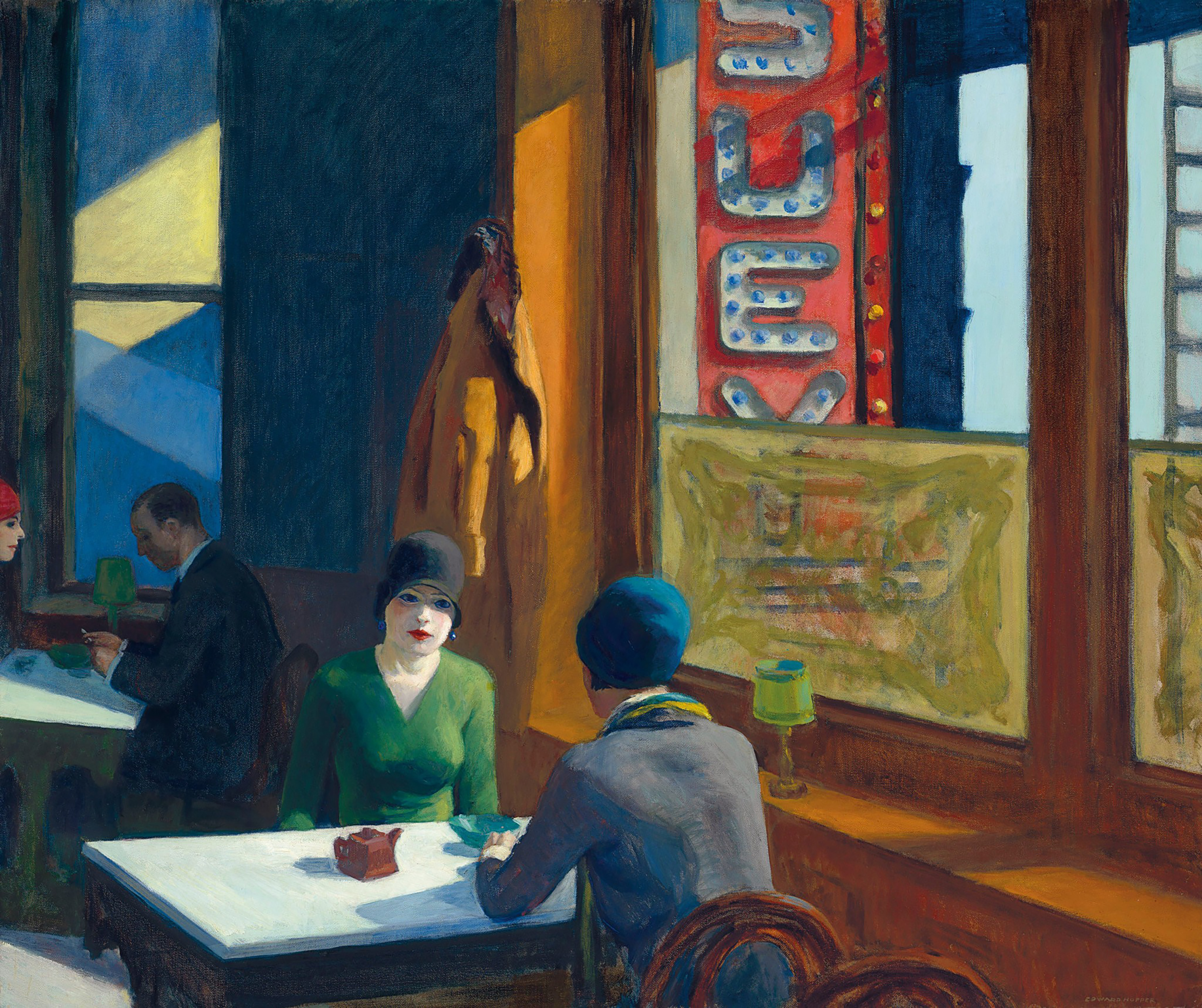

This is best seen in his most famous work, Nighthawks.
#Edward hopper paintings windows#
Through the regular presence of windows in his work, he focuses on perspective and depth. He wants to show us the unspeakable and therefore gives us the privilege of deciding that which is true or false. Transparency is a speciality of Hopper’s.

Nighthawks, 1942 Edward Hopper, Nighthawks, 1942 He prefers to focus on the houses, the small shop fronts and the non-imposing buildings we see but never pay any mind to. Unlike many artists, Hopper isn’t particularly passionate about large architectural structures or sky scrapers. In any work by Hopper, shadows, postures, light and architecture all have something important to say, a secret to divulge. Moreover, we should stare and scrutinize until we understand what he meant. In the heart of a city, in front of shops, cafés, and diners, Hopper invites us to contemplate. These individuals are potentially each of us, without labels, completely anonymous. The characters are not heroes, relatives or acquaintances. Office at Night, 1940 Edward Hopper, Office at Night, 1940 Whether its his attention to the geometrically-shaped furniture, the shadows being cast, the presence/absence of a human figure, or a poorly-lit scene, recognising the artist’s intent in painting these places is a step in understanding his work as a whole. Cinéma à New York, 1939Ĭommon places become extraordinary in the way that Hopper depicts them. New York, Museum of Modern Art (MoMA)*** Permission for usage must be provided in writing from Scala. Hopper’s interest in light play does not seek to bring out their faces or expressions but rather their posture, the spacing betweens their bodies and the eye-striking contrasting of colours. Without even being invited, we observe preoccupied individuals. Room in New York, 1932 Edward Hopper, Room in New York, 1932 It’s as if we’re inside a mystery novel and every scene is charged with off-putting, suspicious qualities. Those who view his paintings are not only spectators but voyeurs, whose curiosity obstructs the calm of the moment – a disturbing vision sublimated by the artist’s photographic and cinematographic touch. Hopper’s eye manages to capture the right scene and the right emotion at the right time. Early Sunday Morning, 1930 Edward Hopper, Early Sunday Morning, 1930 A Theatrical Staging Chop Suey, 1929 Edward Hopper, Chop Suey, 1929 4. From that point on, she held a prominent place in his work as she regularly posed for Hopper.Įdward Hopper, Automat, 1927 3. Shortly thereafter, he met his future wife, Joséphine Verstille Nivison, or “Jo”. They even bought for $100! The following year Hopper decided to devote himself exclusively to painting. In 1923, the Brooklyn Museum’s International Watercolour Exhibition showed 6 of his works. He drew inspiration from ordinary places and brought out their most extraordinary, aesthetically-pleasing qualities. Though their styles differ, they nonetheless set him out on a quest for a particular type of depiction.Īt the beginning of his artistic career he earned his living as an illustrator. He then made three trips to Europe where he was heavily influenced by the work of Edouard Monet and Edgar Degas. First trained as an illustrator, he became interested in painting through his association with artists at the Ash Can School, a movement offering realistic painting inspired by the urban areas of New York suburbs. Edward Hopper, Harris & Ewing, photographer īorn in 1882 in New York, Edward Hopper was an American painter who, from the beginning, had an eye for urban scenes.


 0 kommentar(er)
0 kommentar(er)
